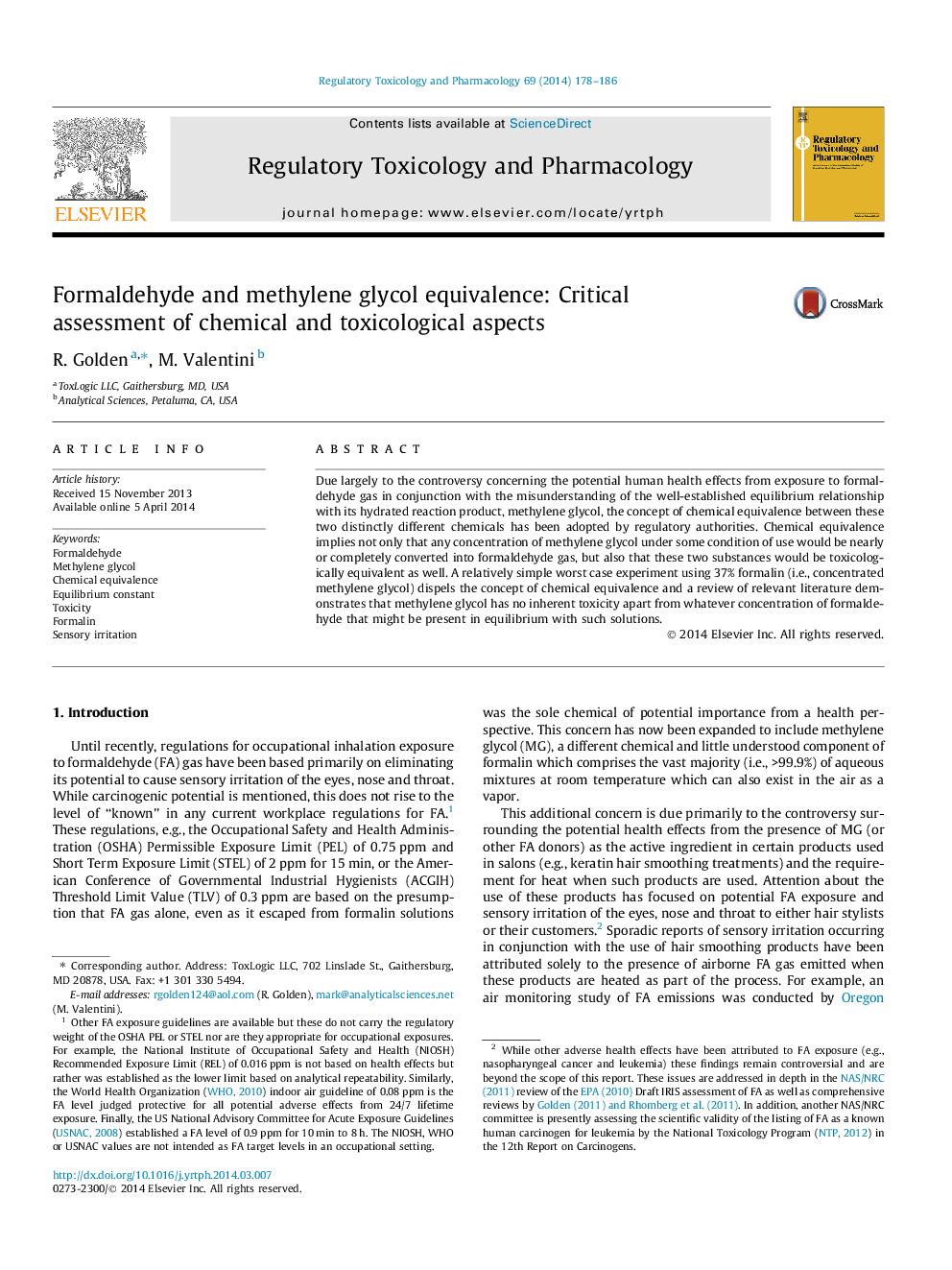| Article ID | Journal | Published Year | Pages | File Type |
|---|---|---|---|---|
| 5857206 | Regulatory Toxicology and Pharmacology | 2014 | 9 Pages |
Abstract
Due largely to the controversy concerning the potential human health effects from exposure to formaldehyde gas in conjunction with the misunderstanding of the well-established equilibrium relationship with its hydrated reaction product, methylene glycol, the concept of chemical equivalence between these two distinctly different chemicals has been adopted by regulatory authorities. Chemical equivalence implies not only that any concentration of methylene glycol under some condition of use would be nearly or completely converted into formaldehyde gas, but also that these two substances would be toxicologically equivalent as well. A relatively simple worst case experiment using 37% formalin (i.e., concentrated methylene glycol) dispels the concept of chemical equivalence and a review of relevant literature demonstrates that methylene glycol has no inherent toxicity apart from whatever concentration of formaldehyde that might be present in equilibrium with such solutions.
Keywords
Related Topics
Life Sciences
Environmental Science
Health, Toxicology and Mutagenesis
Authors
R. Golden, M. Valentini,
